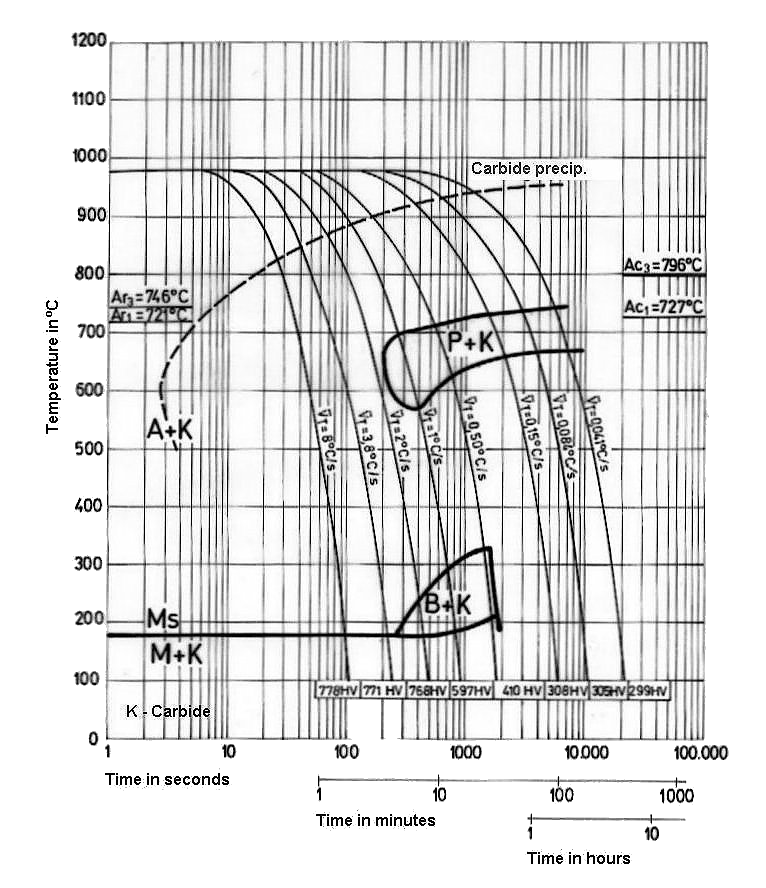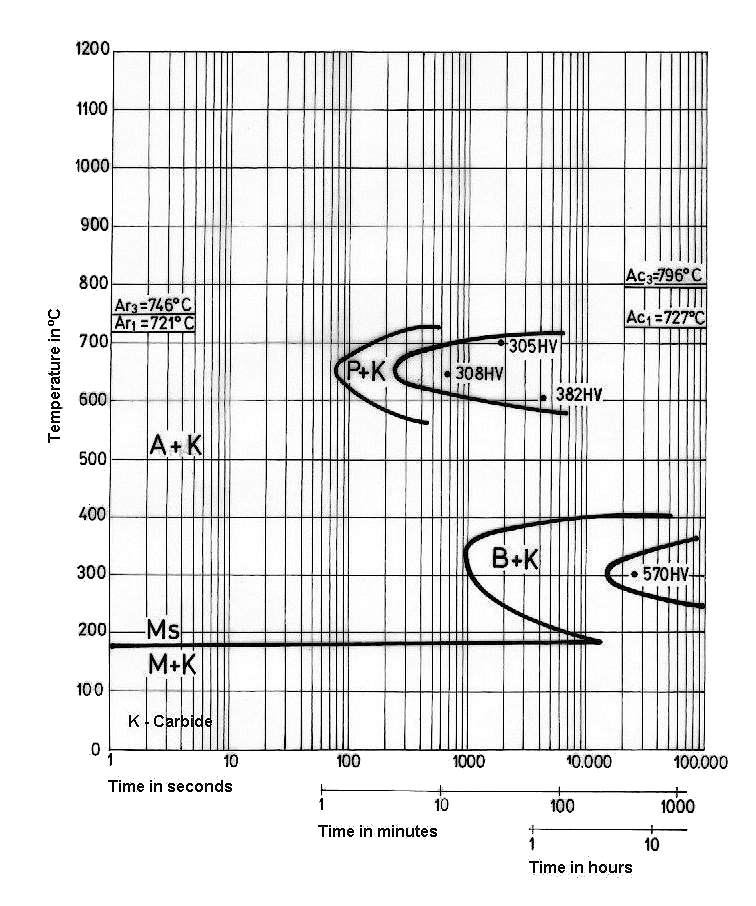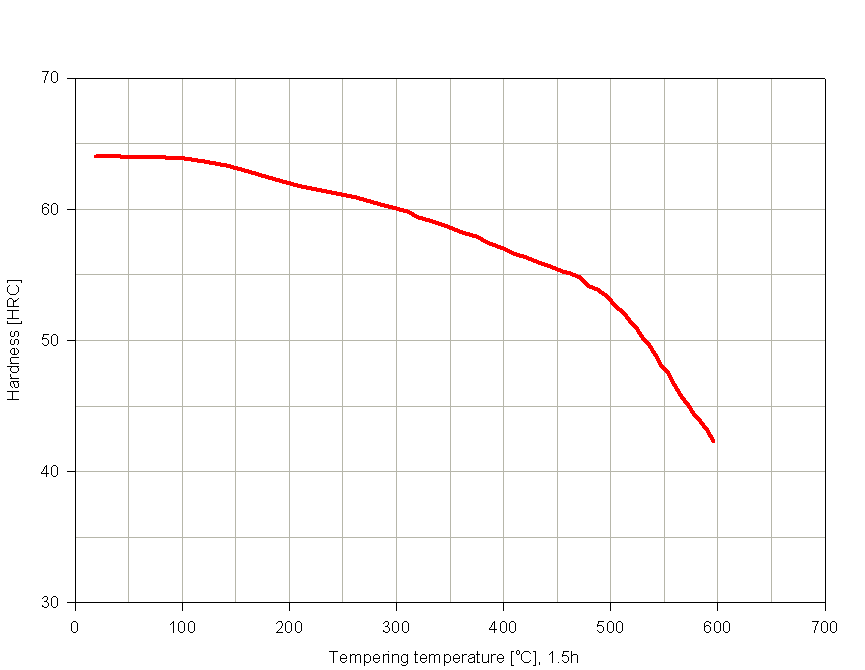1.2080 Tool Steel
1.2080 X210Cr12 AISI D3 is an air hardening, high carbon high chromium, alloy tool steel with excellent resistance to abrasion and wear. 1.2080 X210Cr12 has good through hardening characteristics combined with dimensional stability with high resistance to tempering.
1.2080 AISI D3 is an oil hardening, high carbon/chromium type tool steel with very high wear resistance. It hardens with a very slight change in size. The alloy possesses very high compressive strength and is deep hardening.Cutting tools, stamping, woodworking, drawing, deep drawing and pressing tools, cold working rolls, measuring tools.
Forging: Heat slowly and uniformly to 700°C then more rapidly to 900/1050°C. After forging cool slowly, preferably in a furnace.
Annealing: Anneal at 900°C and slow furnace cool. Hardness after annealing will be approx. 225 brinell. Stress Relieving: If the machining operations have been heavy or if the 1.2080 tool has an unbalanced section, remove stresses before hardening by heating up to 700°C, equalise, cool slowly.
Hardening: Pre heat slowly to 750/800°C and thoroughly soak. Continue heating the 1.2080 component to the final hardening temperature of 950/1000°C and allow the 1.2080 component to be heated through. Cool in air or quenching in oil.
Tempering: Heat uniformly and thoroughly at the selected tempering temperature and hold for at least one hour per inch of total thickness. Double tempering should be carried out with intermediate cooling to room temperature.
| Tempering°C |
150 |
200 |
250 |
300 |
350 |
400 |
| HRc |
64/63 |
63/61 |
62/60 |
61/60 |
60/59 |
59/58 |
Hard Chrome Plating: After hard chromium plating tempering of 1.2080 tool steel is recommended at 180°C for 4 hours to avoid hydrogen embrittlement. Tempering is to be performed immediately after chromium plating.
Soft Annealing: Heat to 800-840C, cool slowly. This will produce a maximum Brinell hardness of 250. To secure uniform softness.
Stress Relieving Stress relieving to remove machining stresses should be carried out by heating to 650°C, holding for one hour at heat, followed by air cooling. This operation is performed to reduce distortion during heat treatment.
Welding:
Due to the high risk of crack formation welding of 1.2080 tool steel should be avoided, if possible. When however welding is essential, the following serves as a guide:
A. Welding of soft annealed 1.2080 tool steel
· Preheat to 300 - 500°C
· Weld at 300-500°C
· Immediately stress relieve
Electrode: Cr-Mo alloy electrode for welding structural steel.
B. Welding in connection with hardening of soft annealed 1.2080 tool steel.
· Heat to austenitizing temperature.
· Cool to approx. 500°C
· Weld at approx. 500°C
· Cool to approx. 100°C in the same way as at normal hardening, then temper to desired hardness. Double tempering will reduce the risk of crack formation.
Electrode: Hard facing electrode.
C. Repair welding of 1.2080 tool steel in hardened and tempered condition.
· Preheat to the tempering temperature (min. 200°C) previously used.
· Weld at tempering temperature.
· Heat immediately to tempering temperature, but max. 300°C. Soaking time 3 hours.
· Cool in air to approx. 80°C.
· Heat to tempering temperature. Soaking time 2 hours.
Electrode: Hard facing electrode.
1.2080 Tool Steel Physical properties (avarage values) at ambient temperature
Modulus of elasticity [103 x N/mm2]: 210
Density [g/cm3]: 7.67
Thermal conductivity [W/m.K]: 20.0
Electric resistivity [Ohm mm2/m]: 0.65
Specific heat capacity[J/g.K]: 0.46
1.2080 Tool Steel Coefficient of Linear Thermal Expansion 10-6 °C-1
| 20-100°C |
20-200°C |
20-300°C |
20-400°C |
20-500°C |
20-600°C |
20-700°C |
| 11.7 |
12.0 |
12.4 |
12.9 |
13.3 |
13.6 |
14.0 |
1.2080 Tool Steel Continuous Cooling Transformation (CCT) Diagram

Click the image to enlarge the diagram.
1.2080 Tool Steel Time-Temperature Transformation (TTT) Diagram

For small parts up to thickness 30 mm. Harden from a temperature of 960-100°C followed by air, comompressed air quenching. Hardness after quenching is 63-65 HRC.
1.2080 Tool Steel Tempering
Tempering temperature: 150-400°C.
1.2080 Tool SteelTempering Temperature (°C) vs. Hardness (HRC)
| 100°C |
200°C |
300°C |
400°C |
500°C |
600°C |
| 64 |
62 |
60 |
57 |
53 |
42 |
Tempering Diagram

| Physical Properties: 1.2080 X210Cr12 |
Temperature: |
|
|
| |
20°C |
200°C |
400°C |
| Density (Kg/dm³) |
7.70 |
7.65 |
7.60 |
| Coefficient of thermal expansion (per °C from 0°C) |
- |
11.0 x 10-6 |
10.8 x 10-6 |
| Thermal conductivity (cal/cm.s °C) |
49.0 x 10-3 |
51.3 x 10-3 |
54.9 x 10-3 |
| Specific heat (cal/g °C) |
0.110 |
|
|
| Modulus of elasticity: |
|
|
|
| Kp/mm² |
19 790 |
19 280 |
17 645 |
| N/mm² |
194 000 |
189 000 |
173 000 |
Stainless Steel Weight Calculator
Pipe Working Pressure Calculator
Conversion Calculator - Pressure|Weight|Temperature|Volume|Length
Conversion Table - Pressure|Stress|Mass|Length|Temperature|SI Prelxes
Metals Weight Calculator-Aluminum | Brass|Bronze|Copper|Magnesium|Plastic|Nickel| Stainless Steel |Steel|Titanium|Zinc
1.2080 | 1.2083 | 1.2311 | 1.2344 | 1.2363 | 1.2379 | 1.2436 | 1.2510|1.2550|1.2767|1.2842|1.3343
AISI O1 | AISI W1 | AISI D2 | AISI D3 | AISI D6 | AISI A2 | AISI H13 | AISI S1 | AISI S7 | AISI P20 | AISI M2 | AISI M42
1008 | 1010 | 1015 | 1018 | 1020 | 1025 | 1035 | 1040 | 1045 | 1050 | 1117 | 1141 | 1144 | 12L14 | 1215 | 4140 | 4150 | 4340 | 8620 | A36 | A653 | A513
|
